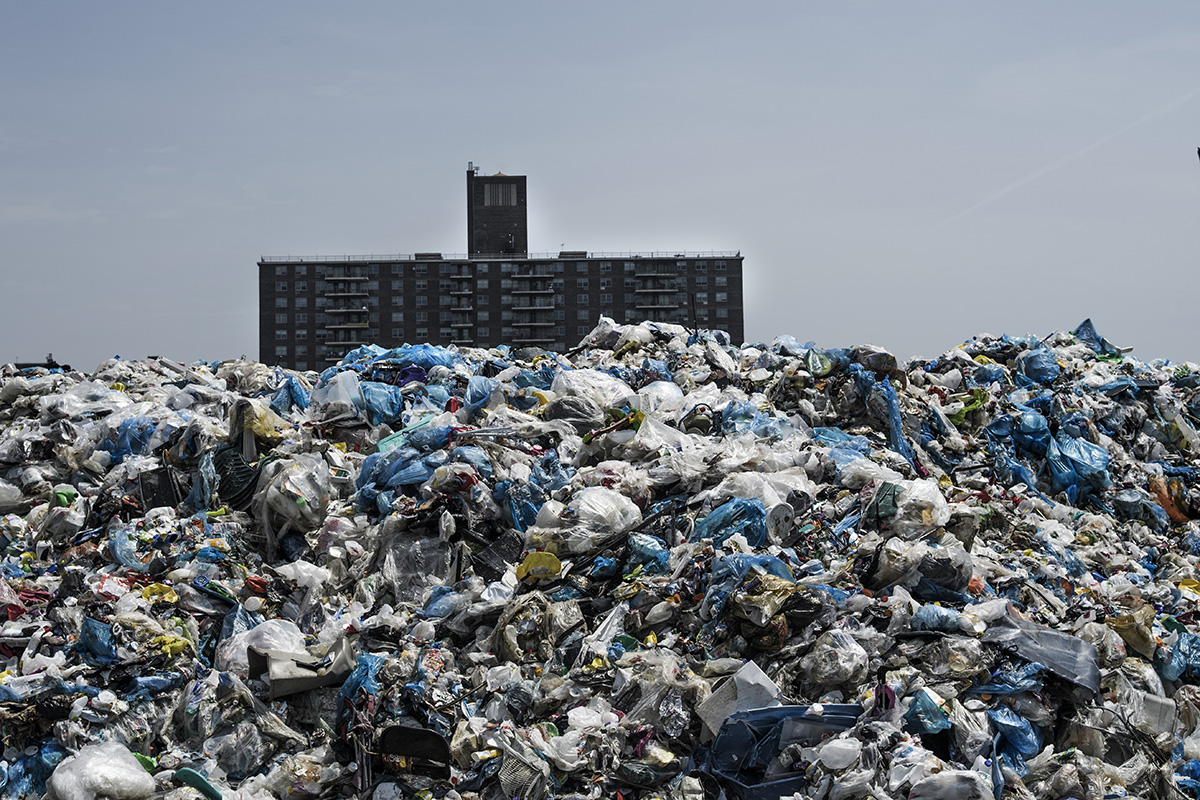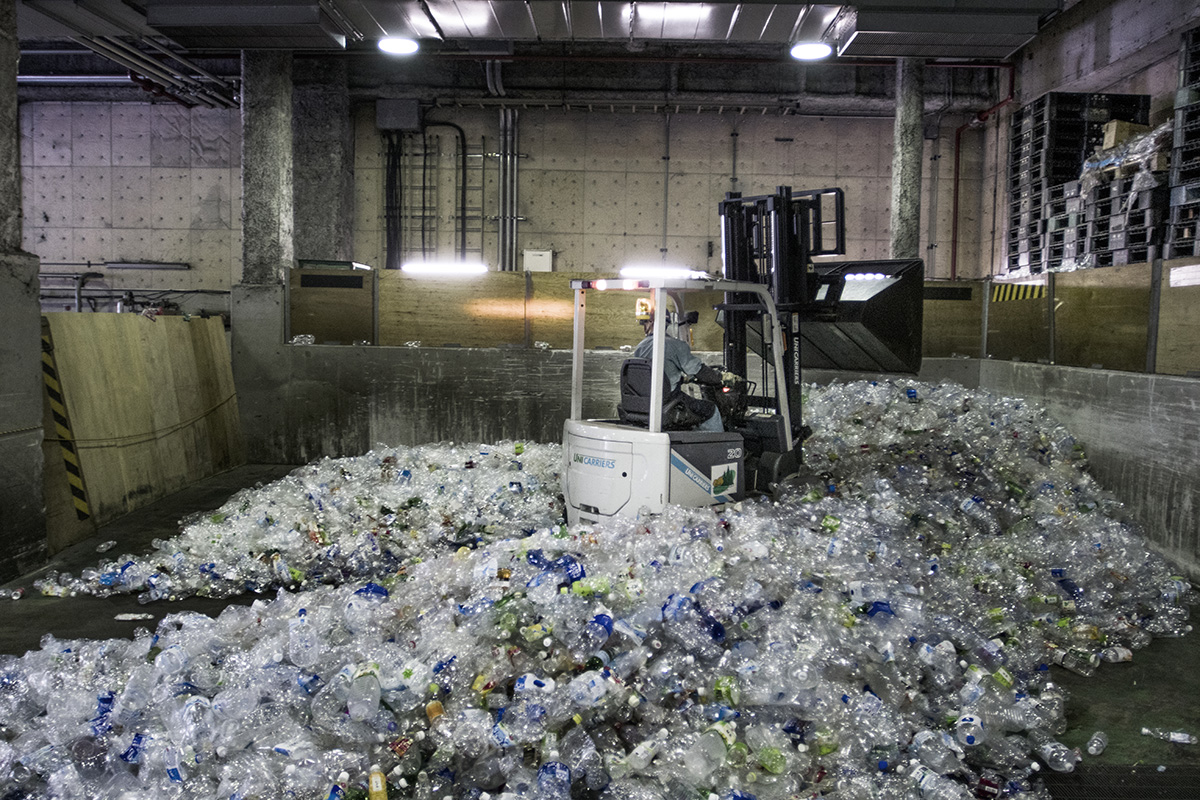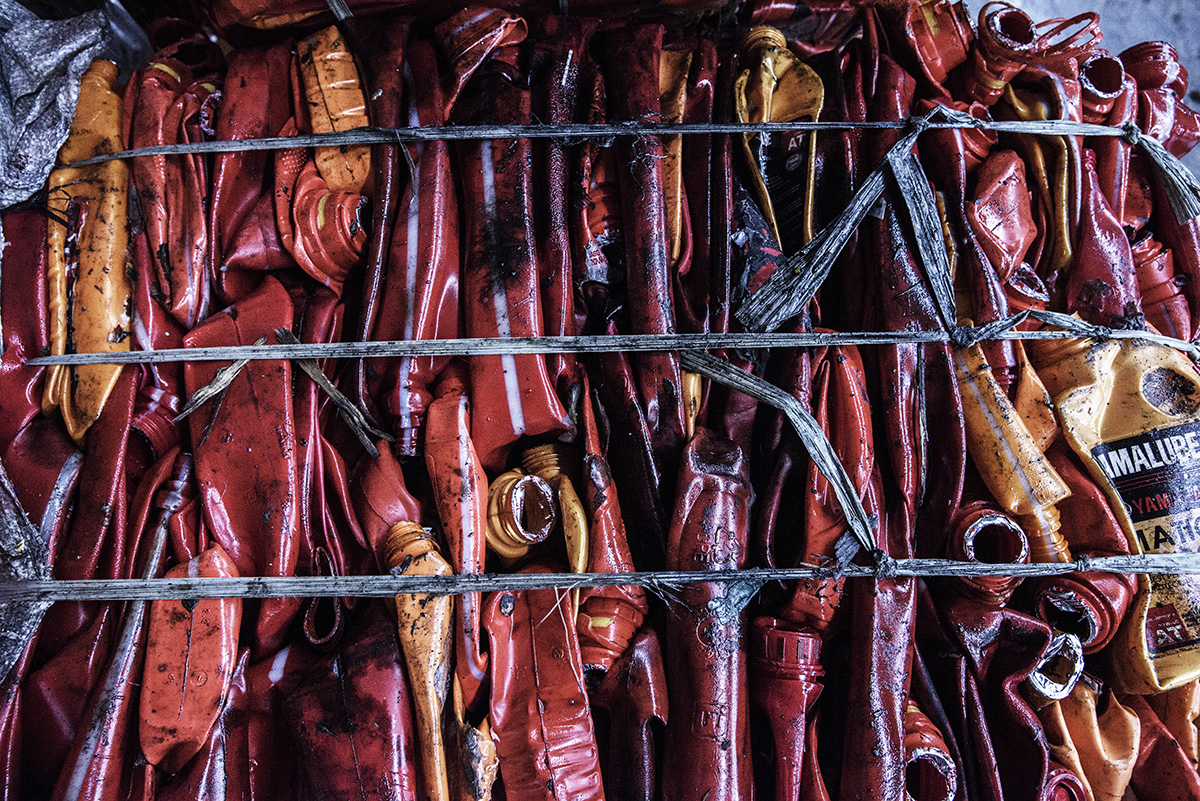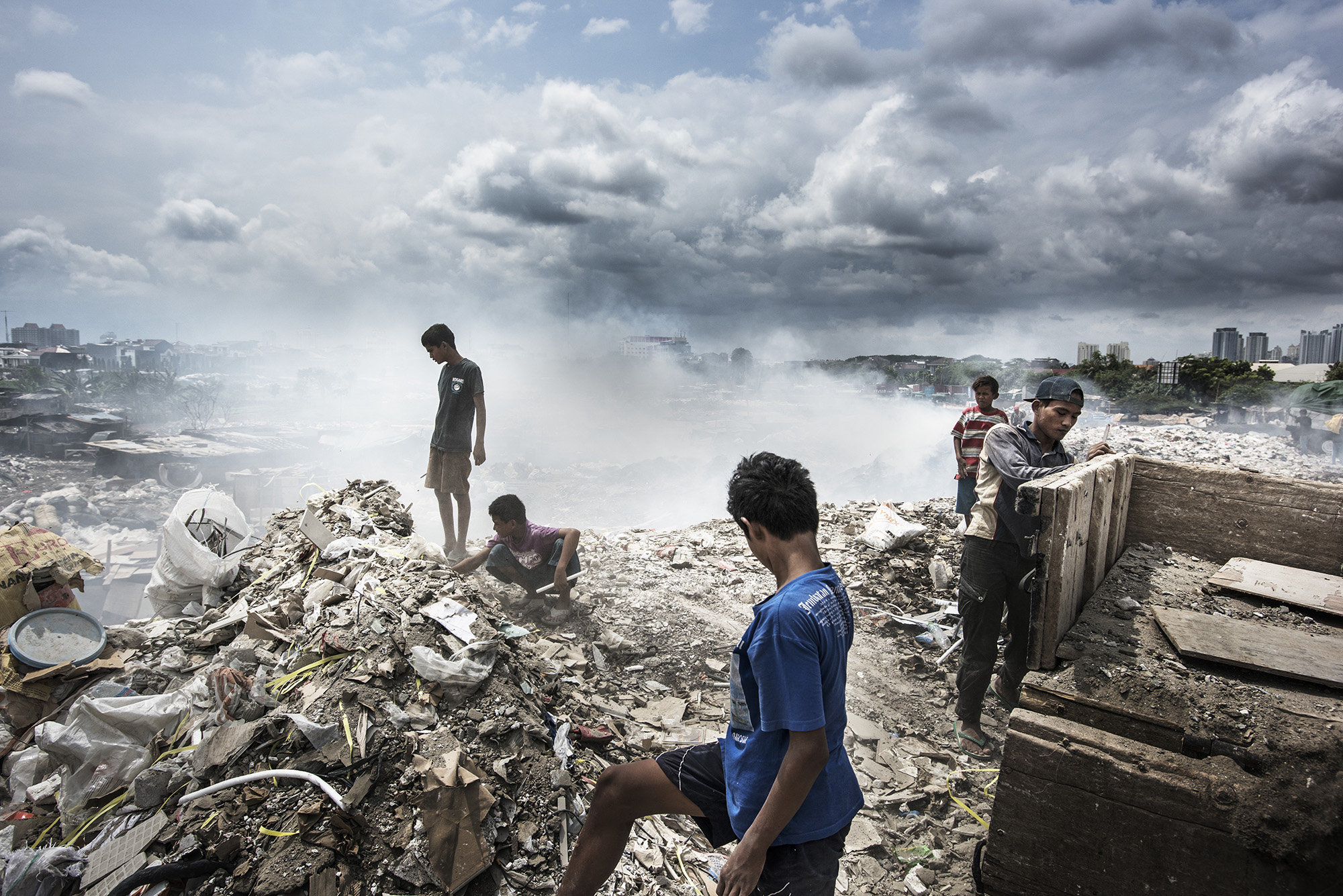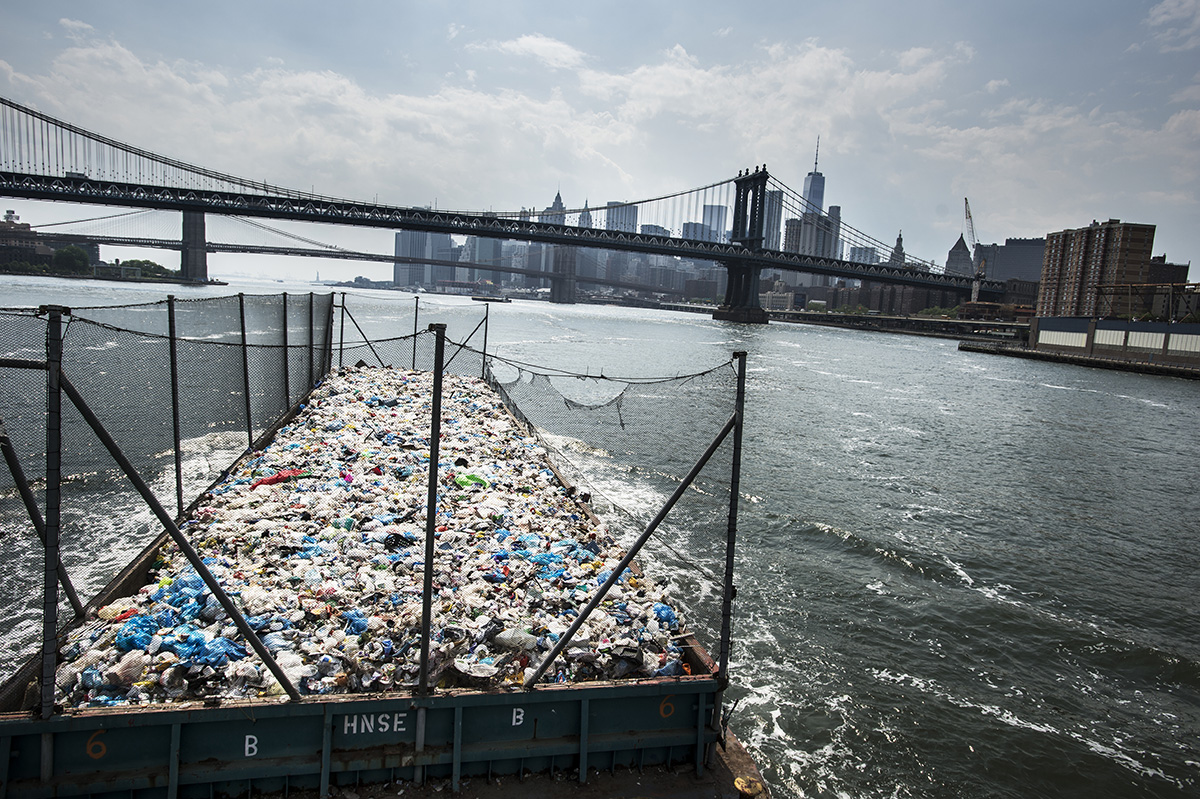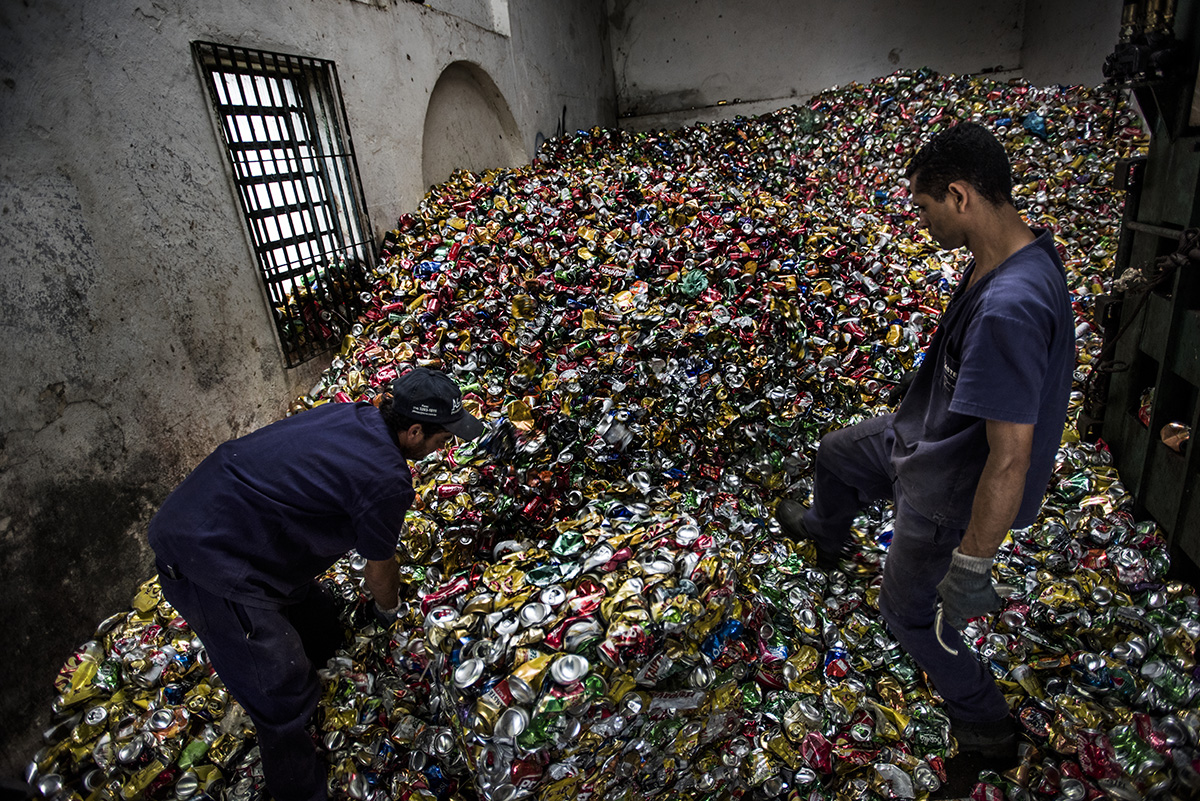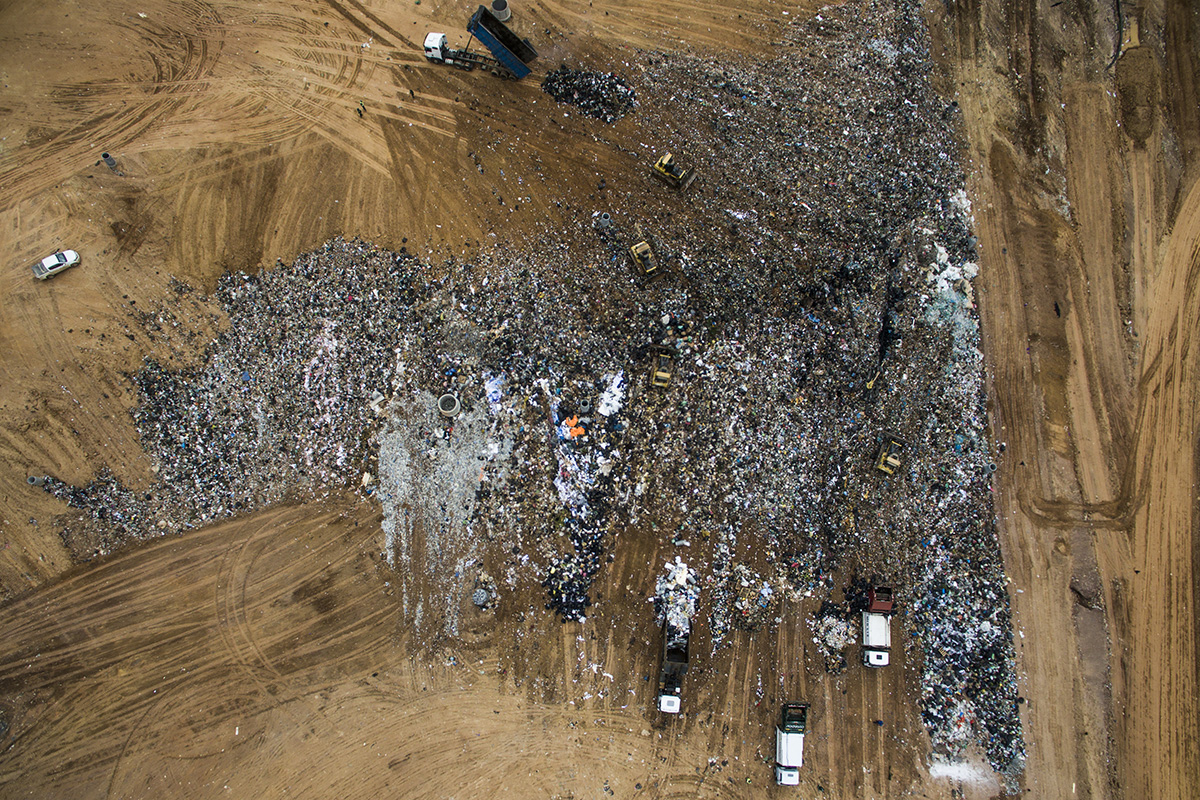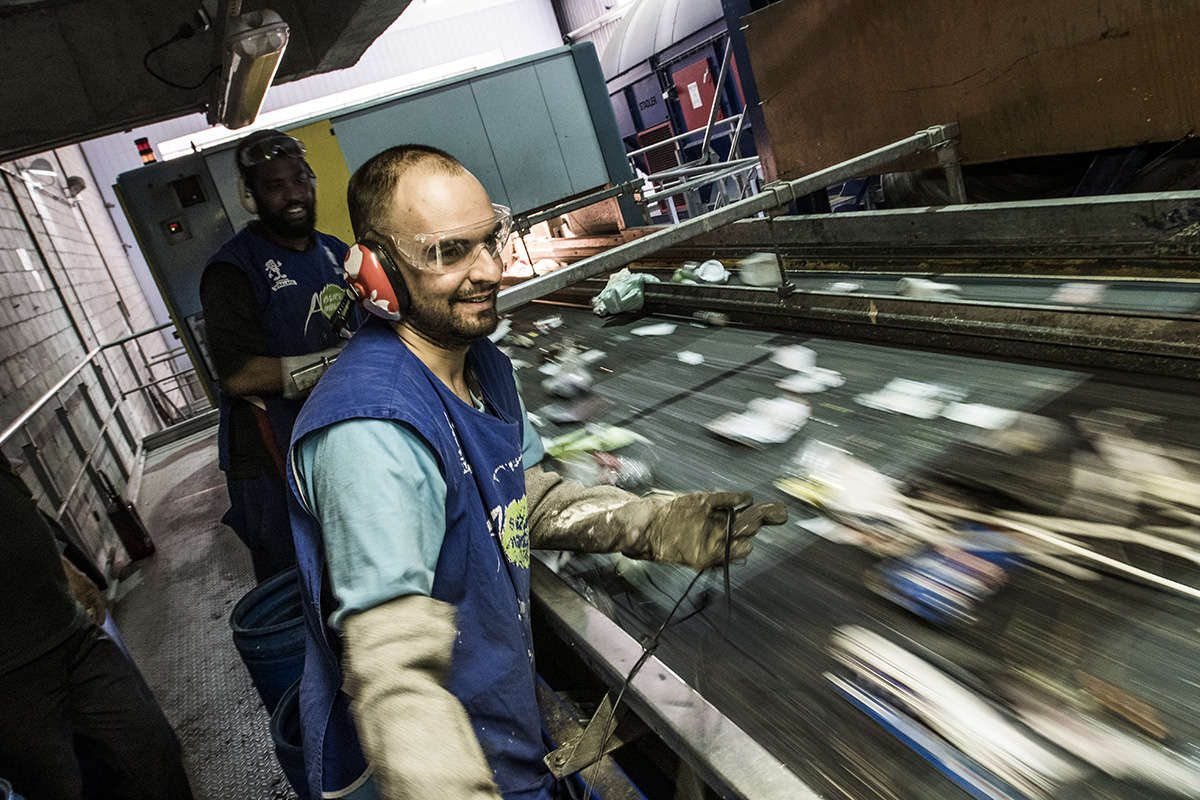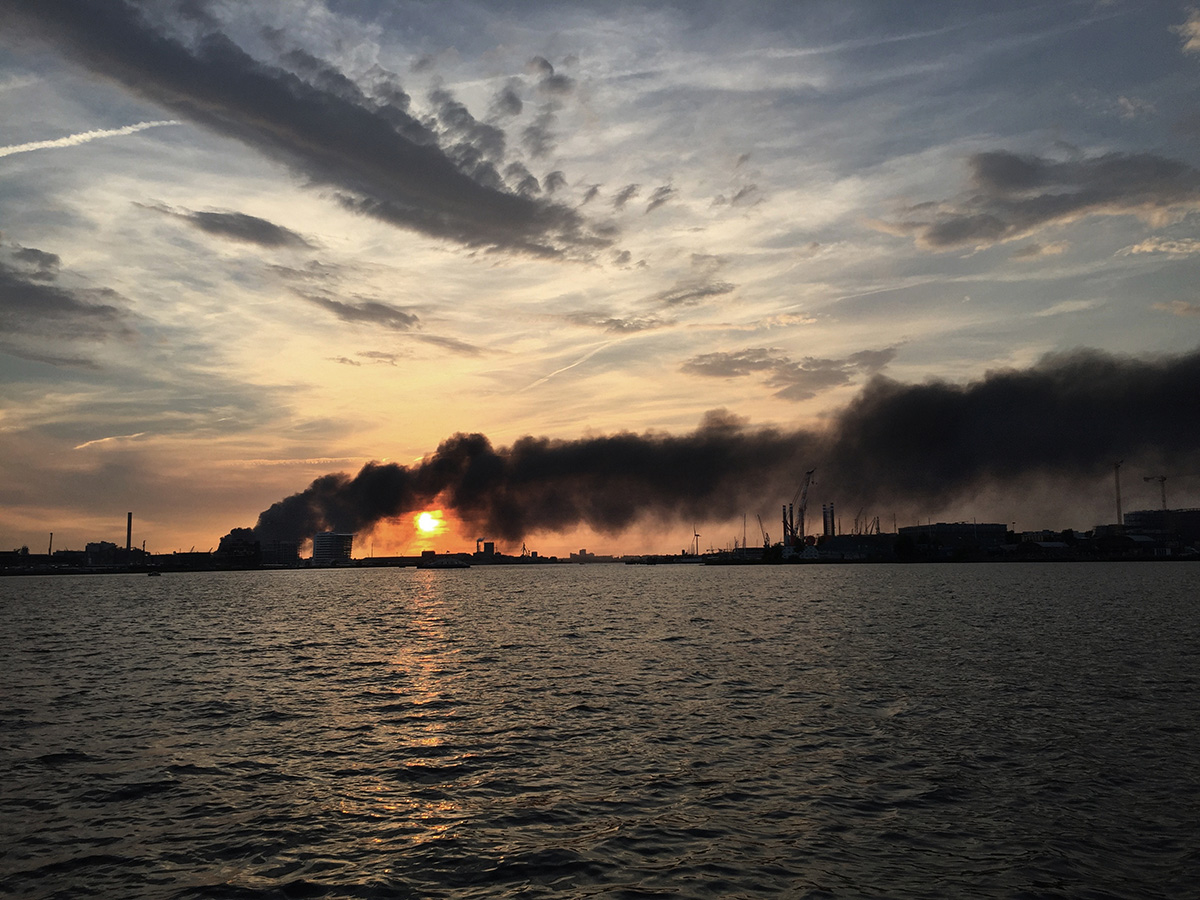Wasteland
by Kadir van Lohuizen
Since early 2016 I have been investigating six megacities in the world (Jakarta, Tokyo, Lagos, New York, São Paulo and Amsterdam) how they manage or mismanage their waste and it shows some remarkable differences. It actually poses the question what is waste and is it actually not a resource. The world generates per day 3.5 million tones of solid waste, ten times more than a century ago. If nothing is done, it will be 11 million tones by the end of the century. The average American throws away his own body weight every month. Where Japan produces only one third of the waste per person compared to the USA. New York produces by far the most waste in the world as a city: 33 million tons per year, which is 15 times more than Lagos, which has a bigger population.
With a sharp increase in the world population and growing economies in different parts of the world, we are producing more waste than ever. Mainly in Europe and the US our trash is invisible, in other parts of the world its more visible in the form of waste dumps. Needless to say that specially open dumps have a severe environmental impact due to the release of methane. Open burning is also damaging, because of the environmental and health impacts. Landfills / waste dumps in emerging cities are quickly filling up, some receiving 10,000 tons of waste per day.
As a country becomes richer, the composition of its waste changes: more packaging, electronic waste, broken toys and appliances.
New York (like San Francisco) now have a goal of ‘zero waste’, this should be achieved by reduction and recycling, but they still have a long way to go. In New York plastic shopping bags are still provided in almost every store. The world produces 311 million ton of plastic per year, of which only 5% is recycled. The Indonesia and China are the leading plastic polluters of the oceans. By 2050, there will be more plastic in the oceans than fishes, currently it is estimated that 5.25 trillion plastic particles, weighing 270.000 tons are floating in the oceans. An average person in the US or Western Europe consumes / uses 100 kilos of plastic per year. Fifteen million tons of headphones are being produced annually, most are not recycled (for example the headphones in the plane). The packaging industry as a whole, including online stores poses a huge challenge.
About one third of the food produced in the world gets lost or is wasted. The Dutch throw away 400.000 bread loafs per day. The USA is wasting by far most food, mainly due to fastfood restaurants.
Most waste in Africa, the USA and Asia end up in open dumps of which many are full and there is no space available to extend or for new dumps. Europe has the highest percentage (12%) of waste being burned in incinerators, some of them are relatively clean, many aren’t and are a threat to the environment and public health. Tokyo has more than twenty incinerators in the metropolitan area, which the city are not hazardous for public health, because of an advanced filtering system and since most of what is burned is organic.
If the world is not prepared to think about waste reduction and actually treat waste as a resource, next generations will drown in their own waste.
Jakarta
Jakarta, Indonesia produces on average 8 millions tons of waste per year.
Jakarta has a population of 31 million and has grown extremely fast in the last 10-20 years, partly due to the economic boom in Indonesia. Most of Jakarta’ waste ends up at Bantar Gebang, the biggest landfill / dump in the world: 110 hectares receiving about 6000 tons per day.
Bantar Gebang should have been closed a while ago; for the thousands of people who scavenge here it's dangerous, the mountain of trash could start sliding resulting in an avalanche of trash.
Jakarta doesn’t have incinerators and no space for another landfill. The scavengers who work in the streets and on the landfill actually has ensured that the city recycles, otherwise there is hardly any formal recycling industry.
Waste in the channels and rivers of Jakarta also causes issues, the system clogs and therefor often causes extensive flooding in the city. For the past two years the city of Jakarta has made a big effort to clean the systems from trash.
Indonesia is the second biggest plastic polluter of the oceans, in the bay of Jakarta artificial islands of plastic trash can be found.
New York
New York, USA has a population of around 20 million and produces 33 million tons of waste per year, making it the number one city of waste production, it produces more than double the waste of the number two, Mexico City. The USA produces more waste than any other country in the world, and New York City presents the greatest challenges of all because of its dense population. What makes the US and New York also different is the fact that usually increasing wealth means an increase of waste. In the US its also the poorer population which takes care of a considerable amount of the waste, largely thanks to the fast food packaging industry. Also food waste is a huge issue in the USA and New York. Together with China and Indonesia is the US the biggest plastic polluter of the oceans.
Still New York does better than other cities in the US: often paper, plastic bottles and cans are being separated, but there are few recycling industries yet. Most of New York’s waste goes to landfills in other US states or to incinerators, also mostly located out of state.
To tackle those challenges, NY City has begun it’s ‘Zero Waste’ initiative
To tackle those challenges, under Mayor De Blasio’s guidance, NY City has begun it’s ‘Zero Waste’ initiative, bringing in a fresh and forward looking take on processing the city’s waste.
In recycling and management New York is more advanced than many of the other American cities, but the sheer amount makes it almost impossible to deal with.
São Paolo
Brazil, São Paulo, December 2016, Waste on the streets at containers, which are infrequently emptied.
São Paulo, Brazil has a population of around 21 million people, who produce around 12 million tons of waste per year. Being one of the largest cities in the world and with a growing middle and upper class, over the years Sao Paulo is producing more waste than ever. Most of it ends up at the landfills. São Paulo is one of the few cities where ‘garbage picker / scavenger’ is an official recognized and protected profession. They are organised in cooperatives and collect mainly plastics, cans, papers from the streets to be sold to companies who take care of further recycling. They are seen as a solution to the problem, instead of the opposite.
Tokyo
Japan, Tokyo, August 2016, Garbage being collected.
Tokyo, Japan is one of the biggest cities in the world and produces on average 12 millions tons of waste per year and ranks third of a city producing most waste (New York, 33 million tons and Mexico city, 14 million tons, produce more).
Due to a lack of resources and space Tokyo does very well on recycling. The city has 48 incinerators, which also produce energy and claims that they are very clean and don’t pose a threat to public health. Households separate all their waste, which is collected separately on different days. There is one operating landfill, which is expected for another fifty years, there is no space for a new landfill. Waste reduction and recycling are the solution. The packaging industry needs to be regulated.
Japan, Ryugasaki, August 2016, Showaglass recycles glass bottles. 350 tons / day, 420.000 tons / year. 72% commercial and 28% household. Kaori Kimchi (48) has been working at the company since 2001. She is from Inashiki city. She removes dirt which is between the glass bottles.
Lagos
Nigeria, Lagos, January 2017, The bay of Lagos gets a lot of waste from the city.
Lagos, Nigeria has a population of around 21 million people, but only produces around 2 million tons a year, fifteen times less than New York City, which has a much smaller population. One of the fastest growing cities in the world has a tremendous problem in how to deal with the waste the city produces itself, but also is dealing with (illegally) imported waste from Europe and the USA.The two landfills in Lagos are full and there is no real viable alternative in the near future what needs to happen next. At least the thousands of scavengers working at the landfill help to recycle under harrowing conditions. What looks like apocalyptic is actually very well organised. What is surprising is that the landfill doesn’t smell as bad as others do around the world, this is largely due to the fact that Nigerians hardly waste any food
Nigerians hardly waste any food
The city is planning to close the landfills and build transfer and sorting stations and incinerators, but this will take years before they are operational. In the meantime in some areas of Lagos people use waste to reclaim land from the sea to build on.
Amsterdam
Netherlands, Amsterdam, May 2017, A special boat cleans the canals of bicycles, on average 20,000 are fished out of the canal every year. Often safes are found as well, emptied after being stolen and thrown into the canal.
Amsterdam has a population of around 900.000. Amsterdam produces on average around one million tons of waste per year.
Everything that people throw in their garbage bag goes to the incinerator, after the process metals are being sorted out. The plant plans to open a new facility by the end of this year, which will take out plastics and other recycles, but due to the capacity, will not be able to serve to the whole volume. The incinerator also receives British household waste: the UK doesn’t have enough incinerators and Amsterdam has an overcapacity. The risk of incineration is also that they need waste as fuel, which could mean that there is less separated.
Just the Dutch throw away 400.000 bread loafs per day
Paper and glas are pretty well separated by the population of Amsterdam, plastic is starting. At all shops you have to pay now to receive a plastic bag. A total of around 28% of waste is being recycled currently.
Food waste is a huge issue and a waste all over the world. Just the Dutch through away 400.000 bread loafs per day.
Netherlands, Amsterdam, April 2017, Crews from the city of Amsterdam cleaning the streets at night after Kings day.



